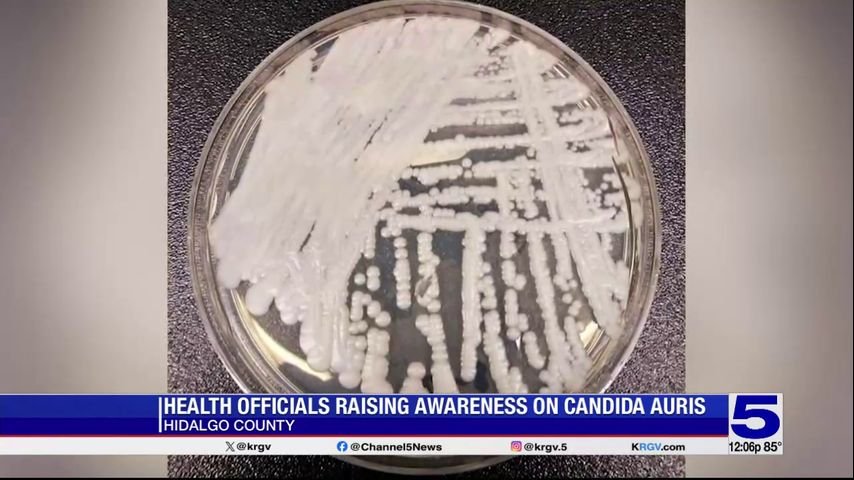Rising Concerns Over Candida Auris in the Rio Grande Valley: What You Need to Know
Health officials in the Rio Grande Valley are on high alert as cases of a potentially life-threatening fungus, known as Candida Auris, rise. Though not an immediate threat to the general public, this fungus poses significant risks, particularly for patients in hospitals and nursing homes.
What is Candida Auris?
Candida Auris is a type of fungus that can lead to severe infections, especially in individuals with weakened immune systems. According to the Centers for Disease Control and Prevention (CDC), this pathogen is resistant to several antifungal medications, making treatment challenging. It primarily spreads in healthcare settings, including hospitals and long-term care facilities.
Rising Case Numbers
Recent reports from the Hidalgo County Health Department indicate about 150 confirmed cases of Candida Auris this year. In Cameron County, health officials have reported 40 cases, rising from a total of 50 cases documented in 2024. Officials anticipate that these numbers will continue to rise as the year progresses.
Who is at Risk?
Dr. James Castillo, the Cameron County Health Authority, emphasizes that while Candida Auris is more threatening to chronically ill patients in healthcare environments, it is essential for all community members to stay informed. Infections caused by this fungus can be fatal, especially when they penetrate the bloodstream or invade internal organs. According to Dr. Castillo, “A very good percentage of patients won’t survive that infection,” highlighting the importance of vigilance.
Symptoms of Candida Auris Infection
Recognizing the symptoms of a Candida Auris infection can be crucial for early intervention. Look out for the following signs:
- Redness or rash
- Itching or irritation
- Swelling or tenderness
- Pus or drainage near wounds or medical devices
- Fever and chills that do not improve with antibiotics
- Weakness or fatigue
If you notice these symptoms, especially in a healthcare setting, consult a medical professional immediately.
How Does Candida Auris Spread?
Candida Auris can survive on various surfaces year-round, including hospital equipment and bed rails. It can also persist on human skin, making it crucial for hospitals and caregivers to adhere to stringent hygiene practices. The fungus spreads mainly through direct contact, complicating its containment and treatment.
Diagnosing Candida Auris
Testing for Candida Auris involves blood cultures or skin swabs and can take several days for results. Once a hospital confirms a case, strict protocols are put in place. The infected patient is isolated to prevent further spread, and surfaces must be disinfected frequently. Healthcare staff and visitors are required to don gowns and gloves for protection.
Precautions for Visitors
For those visiting patients in hospitals, there are essential precautions to mitigate the risk of Candida Auris transmission:
- Avoid direct contact with patients.
- Wash your hands thoroughly before and after your visit.
- Follow all safety protocols outlined by healthcare staff.
Conclusion
As health officials in the Rio Grande Valley closely monitor the rise of Candida Auris cases, it is essential for both healthcare providers and the general public to remain informed. Understanding the risks, symptoms, and preventive measures can make a significant difference in controlling the spread of this alarming fungus.
Stay informed and vigilant. For further information on Candida Auris, visit the CDC website.
Final Thoughts
While the current situation is not a public emergency, awareness can save lives and prevent severe infections. Knowing the symptoms, practicing good hygiene, and following medical advice is crucial for keeping both patients and visitors safe.
For more detailed insights, check out related articles on healthcare safety and fungal infections.


